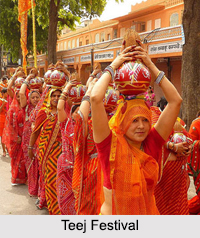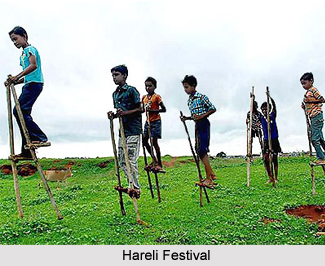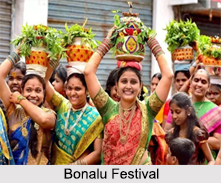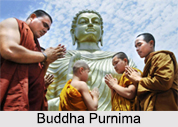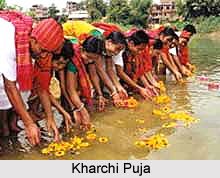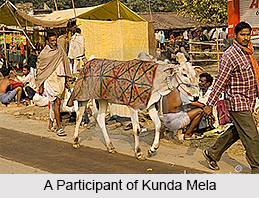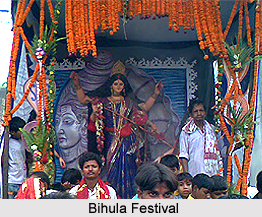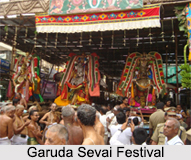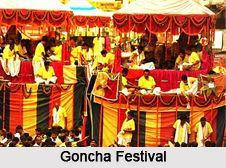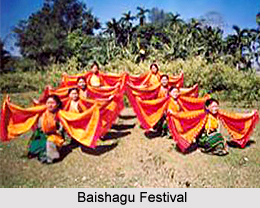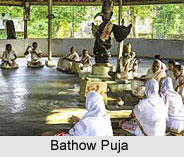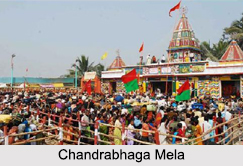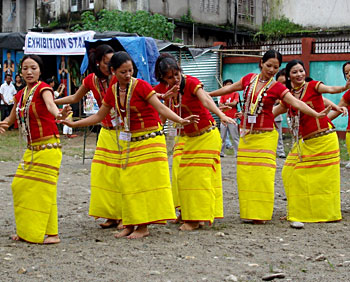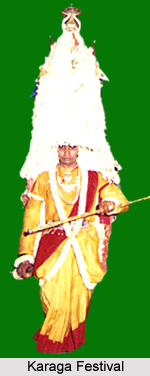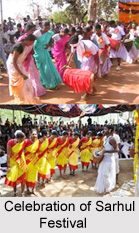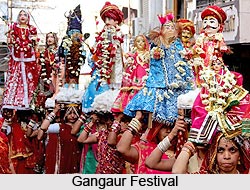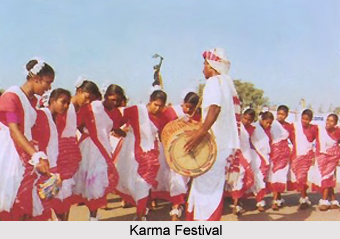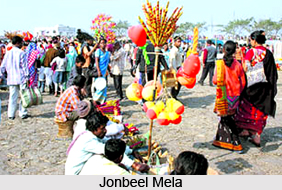 Jonbeel Mela is a community fair organized in the Morigaon district of Assam. Dayang Belguri located near the lake Jonbeel in the district is a historical place and forms the exquisite venue for the event. This three day fair is held at the weekend of the harvest festival of Assam called Magh Bihu. Jonbeel is an Assamese term which refers to the moon and a wetland respectively and the fair derives its name from the large natural water body, Jonbeel, next to which the fair is celebrated. The lake resembles the shape of a crescent moon.
Jonbeel Mela is a community fair organized in the Morigaon district of Assam. Dayang Belguri located near the lake Jonbeel in the district is a historical place and forms the exquisite venue for the event. This three day fair is held at the weekend of the harvest festival of Assam called Magh Bihu. Jonbeel is an Assamese term which refers to the moon and a wetland respectively and the fair derives its name from the large natural water body, Jonbeel, next to which the fair is celebrated. The lake resembles the shape of a crescent moon.
History of Jonbeel Mela
Jonbeel Mela is believed to have originated in 15th century AD. The Ahom kings led to the commencement of this fair for discussing the political situations prevailing in their kingdom.
Barter System at Jonbeel Mela
A few days prior to the fair, tribal communities such as Jayantia, Tiwa, Khasi and Karbi belonging to the northeast India descend down the hills with their indigenous products and exchange their artefacts and basic articles of necessity with the local folks of the plains in a barter system. Herbs, spices, fruits, ginger etc are brought by the people of the hills to interchange them with rice, cakes and other food stuffs that cannot be grown on hills.
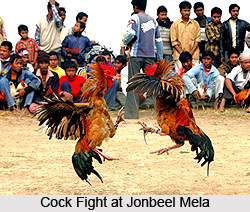 Numerous tribal villagers from the different parts of Assam arrive in this beautiful place to meet the folks of the plains for exchanging goods. During the three days of the festival temporary bamboo huts are created by these people where they cherish the festivity with great enthusiasm. It is referred to as a hi-tech age barter system and is possibly the only fair in the country where barter system is still active. In fact this is quite an uncommon practice in this civilized modern society.
Numerous tribal villagers from the different parts of Assam arrive in this beautiful place to meet the folks of the plains for exchanging goods. During the three days of the festival temporary bamboo huts are created by these people where they cherish the festivity with great enthusiasm. It is referred to as a hi-tech age barter system and is possibly the only fair in the country where barter system is still active. In fact this is quite an uncommon practice in this civilized modern society.
Features of Jonbeel Mela
Fire worship, also known as Agni Puja, is performed before the start of Jonbeel Mela to pray for the well being of the mankind. Community fishing in the Jonbeel wetland marks the beginning of the fair. Jonbeel Mela is characterized by a huge and vibrant bazaar. Exquisite traditional dance and music can also be witnessed there, performed by the various tribes. Cock fights, group meals and exhibitions of varied artefacts form prime attractions for the visitors from all around the country. It is also visited by the Gova king, the King of Tiwa tribes, along with his courtiers for collecting taxes from his subjects. On the day before the fair, a community feast is arranged by the king with his officers on the bank of Jonbeel. Promoting the harmony and brotherhood among the various communities and tribes dwelling in the northeast India is the main focus of Jonbeel Mela. An ambience of fun and gaiety can be experienced in the fair.
